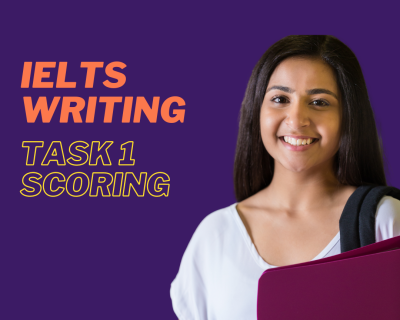Introduction
Navigating the world of English proficiency exams can be daunting with various options like IELTS and PTE. These exams serve as a gateway for non-native English speakers to prove their language competency for global opportunities. This article will provide a granular comparison between the International English Language Testing System (IELTS) and the Pearson Test of English (PTE) to guide you in choosing the exam that’s right for your goals.
Section 1: Understanding the IELTS Exam
1.1 What is IELTS?
IELTS stands for the International English Language Testing System. It assesses the English language proficiency of individuals who aim to study or work where English is a communication language. IELTS has two types: Academic, for those pursuing higher education or professional registration, and General Training, for those migrating to an English-speaking country or for practical training.
1.2 IELTS Test Format
IELTS comprises four sections:
– Listening: 40 questions within a 30-minute span.
– Reading: 60 minutes to complete 40 questions.
– Writing: Consists of two tasks to be completed in 60 minutes.
– Speaking: 11-14 minutes of an interview with an examiner.
IELTS is available in over 1,600 locations across the globe, offering both paper-based and computer-delivered tests.
1.3 IELTS Test Content
Each section of the IELTS exam challenges different language abilities:
– Listening includes a mix of monologues and conversations.
– Reading encompasses several passages with various question types.
– Writing tasks range from describing visual information to writing an essay.
– Speaking involves a face-to-face interview, including a short speech.
Tips for excelling include familiarizing yourself with different accents for listening and practicing time management for the reading and writing sections.
1.4 Scoring and Grading System
IELTS results are reported as band scores on a scale from 1 (the lowest) to 9 (the highest). Each of the four sections is equally weighted, and the overall band score is the average of the four.
Section 2: Understanding the PTE Exam
2.1 What is PTE?
The Pearson Test of English, or PTE, specifically the Academic version, is a computer-based test that measures the English language ability of non-native speakers. It’s recognized worldwide by universities, colleges, and governments.
2.2 PTE Test Format
PTE has three main parts over the course of approximately three hours:
– Speaking and Writing (together): 77 to 93 minutes.
– Reading: 32 to 41 minutes.
– Listening: 45 to 57 minutes.
PTE is known for its flexibility, with test centers available globally and results often available within a few days.
2.3 PTE Test Content
The PTE exam is distinct in its integrated skills approach:
– Speaking and Writing include personal introduction, summarizing written and spoken text.
– Reading assesses skills with various question types, including multiple-choice and re-order paragraphs.
– Listening tasks range from summarizing spoken text to multiple-choice questions.
To succeed, practice typing skills for written responses and hone note-taking for listening tasks.
2.4 Scoring and Grading System
PTE scores range from 10 to 90 points. Unlike IELTS, PTE offers granular scores, potentially providing a more precise assessment of your proficiency level.
Section 3: Comparing IELTS and PTE
3.1 Test Validity and Recognition
Both IELTS and PTE are widely recognized by educational institutions, employers, and governments. Determining which exam to pursue often depends on specific requirements set by bodies like universities or immigration authorities.
3.2 Test Structure and Format
IELTS and PTE differ in format, with IELTS offering a paper-based option and PTE being completely digital. Each exam varies slightly in section structure and time allocation, potentially influencing your performance based on your strengths and preferences.
3.3 Speaking Test Comparison
Where IELTS involves a live conversation with an examiner, PTE requires you to record your responses on a computer. This difference can impact your performance depending on your comfort level with interaction types.
3.4 Writing Test Comparison
Both tests have a written component, but PTE responses are typed while IELTS can be handwritten in the paper-based version. Scoring criteria and tasks also vary, presenting unique challenges.
3.5 Listening and Reading Test Comparison
Listening and reading are assessed differently, with PTE employing a digital format that includes integrated skills tasks, and IELTS following a more traditional approach. Both exams require strong comprehension and analytical skills.
Section 4: Choosing the Right Exam
4.1 Your Study Goals and Requirements
Consider your objectives for taking the exam. If you’re applying to a particular university or country, verify their English test requirements. Each institution may prefer one test over the other.
4.2 Personal Preferences and Skills
Reflect on your test-taking abilities and preferences. Are you more comfortable with typing or handwriting? Do you perform better in a structured interview or recording your voice? Your personal comfort can impact your performance.
4.3 Test Availability and Convenience
PTE might offer quicker results and more flexible scheduling options, while IELTS is more widely available and offers both paper-based and computer-based options. Cost and location of test centers are pragmatic considerations.
Conclusion
Choosing between IELTS and PTE depends on personal goals, test center availability, and individual strengths in English proficiency. By understanding the structure, content, and scoring system of both IELTS and PTE, you can make an informed decision on the exam that will best suit your needs, enhancing your trajectory towards academic and professional success. Remember, the right choice is the one that aligns seamlessly with your personal circumstances and future aspirations.

















